The Landguard: Smuggling in the 18th Century.
The Landguard:Smuggling in the 18th Century.
When it comes down to the subject of 18th century Smuggling, not much is mentioned about the unsung heroes of the Landguard. There are not to many public houses or taverns called 'The Riding Officer' ,but plenty called or referring to smuggling. The Riding Officers and the Landguard had it tough, it was a thankless task and with the odds stacked against the Riding Officers. Those brave enough executing the job were open to corruption and danger. One such example of how dangerous being a Riding Officer was in 1740 Thomas Carswell found a stash of tea in a barn at Etchingham, East Sussex after shadowing its landing by none other than the Hawkhurst gang at Bulverhythe, Hastings. Carswell with assistance of some Dragoons recovered the tea from a barn and started to convey the tea to Hastings Customs house. However, 'Trip' Stanford, who was leading this particular landing received word about Carswell taking the tea. The intoxicated 'Trip' Stanford gave chase with a gang of smugglers, resulting in the Battle of Robertsbridge. Thomas Carswell was in the head and died. With one ne Dragoon taken as a prisoner (The Hawkhurst Gang).
The pay made by the crown to a Rding Officer was a secure income it was easy to take a stipendiary from the Crown. Some Officers also took payment from the Smugglers ! Some bribes from Smugglers came relatively cheap, an example is described here when a smuggler by the name John Sowton said of the Riding Officer in Lancing, West Sussex in the 1740s 'Dam him, it is as easy as can be to make him quiet, for do but a dash a bottle Brandy in his face and He is as blind as a beetle.' (p30, Smuggling in Kent and Sussex, Mary Waugh, 1985). However, it must be noted in the Regency period corruption was normal. So it's time to tell the stories of the brave men who did their level best to enforce the law against smuggling, track down French spies and survey the coast for any indication of invasion.
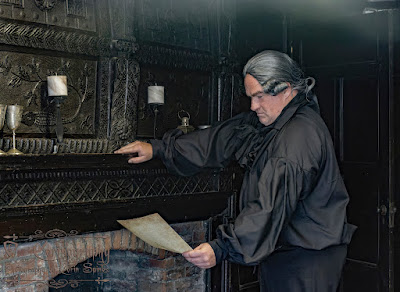 |
| Credit to https://www.minthousepevensey.co.uk/ & https://www.corinography.co.uk/ |
The role of the Riding Officer was introduced from 1690 as the only enforcement against smuggling and eventually evolved into the modern day coastguard.The Riding Officer was a solitary role commissioned by the Crown and had a reporting line to a supervisor or surveyor-general.One of the most famous Surveyor-Generals was the famous 'Mr Hastings' John Collier,five times Mayor of Hastings and a local ally to the Whig Government, not to mention prolific letter writer. The role of Surveyor General provided an income of four hundred pounds per annum (p123, Mister Hastings,Kent Barker,2021). Collier was Surveyor General of Kent and He inspected the county once a year as part of his role and issued prosecution proceedings against smugglers. Collier would be expected to administer the Riding Officers, liaise with the Commission of Customs in London and the military for Dragoons.
 |
| A Mounted Dragoon. |
John Collier had strong alliances in London and the Government. He was a Lawyer and Surveyor General of Kent from 1733, a role He did not enjoy especially when crossing the Romney Marsh,Kent, a hot bed of smuggling during his term of office. Collier also prosecuted Smugglers and actually defended one who was related to him, a certain Thomas Holman part of the Hawkhurst gang. Contemporary texts would suggest Holman mortally wounded Dragoon Micheal Bath in April 1744 after a landing at Goring West Sussex (near my home). Collier managed to amend Holman's sentence from execution to transportation, However, Holman escaped to France (Smuggling & Kent 1700-1840, Mary Waugh, 1985) !
Collier when making his once a year annual tour of Kent visited Rye (East Sussex), Lydd, New Romney, Dymchurch, Hythe, Folkestone, Dover, St Margret's, Deal, Sandwich, Ramsgate, Broadstairs, Birchington, Margate, Herne, Whitstable, Canterbury, Faversham, Sittingbourne, Milton, Isle of Sheppey, Rochester, Hoo, Dartford and Tunbridge Wells. Collier interviewed every Riding Officer and reported back his recommendations -
'The Officer at Birchington whose name is Richard Thunder, a poor, indolent man and who I believe does little duty. I humbly observe to your honours that Broadstairs and Birchington is about six miles distant and therefore very inconvenient to the officers and in great measure prevents them from going on duty together, and in regard to their district is so long I humbly propose that the Ramsgate Officers should extend their ride to Margate. That Cowper should be removed to Birchington and the ride of him and Thunder be from Margate to Reculver and then they may go out on duty together.'
The Riding Officer would be issued with a standard brace of Flintlock pistols and a Cavalry Sabre (p75, Rough, Rude, Men, Douch, 1985). The Riding Officer was required to patrol their district night and day with a ten miles of coast line and five miles inland from that coast line. Riding Officers were expected to liaise with other Officers in carrying out their operations.There were a total of two hundred and ninety nine officers reporting to seventeen Surveyor Generals along the southern coast. It was part of his duty to keep a journal logging his movements and seizures. Gather intelligence and keep watch for a French invasion. The Riding Officer pay was £90 per annum, his horse, the cost of any prosecution (https://randombitsoffascination.com/) and man servant expenses were to be withdrawn from his pay.
 |
| An illustration of a Riding Officer. |
The job of Riding Officer was a dangerous one, John Bursey Riding Officer, Milton, Hampshire was killed in 1780, when tricked outside of his front door. He was beaten to death around the head and his wife shot when She raised the alarm (Milton Heritage Society).
'I humbly observe to your honours that the Smugglers in Romney Marsh are associated into very large formidable Gangs and that without the assistance of Dragoons believe the Riding Officers will not be able to guard the coast to prevent clandestine running of goods' - John Collier, 1734.
Often Officers would be operating at night and were outnumbered. Even if the Officer secured a captured Smuggler, conviction was hard to come by because of local gangs working in collaboration with Juries and local Magistrates. One example is Riding Officer Reeves who was murdered near Eastbourne, the authorities held the Mayfield gang leader Gabriel Tonkins responsible, Tonkins was later acquitted. However, some Officers were with success. The following entry was made in a newspaper in 1772 -
'October 1772. – The following seizure of contraband goods was made yesterday se’nnight, on the beach, in the parish of Bexhill by Messrs, Edwards and Thatcher, Riding Officers, at Hastings, and William Wood, Boatman at that place, viz. 326 casks of brandy and Geneva, 594 pair of womens’ kid gloves, 25 pairs of mens’ silk ditto, 24 coloured silk shawls, 113 yards black and coloured silks, 10 pair of womens’ white silk stockings, 15 pair of womens’ coloured silk shoes, 144 yards black yard-wide crape, and two boxes of playing cards. Also a lugger, in which the above goods were transported, and her materials; all of which were safely delivered into the care of the Collector and Comptroller of the Customs at Hastings' (https://seasaltercross.com/2016/02/11/reports-on-the-life-of-the-kent-coast-riding-officers/
Riding Officers working together were also involved in a two hour battle with the Little Common gang in 1822. Coastguards (a combination of Land and Water Guards) engaged with the gang outside the Star Inn Pevensey sluice (Normans Bay) East Sussex for two hours. The Smugglers were chased for several miles. Three smugglers killed and five taken prisoner. The Coastguards were given a bonus of £20 for their success (p100, smuggling in Kent & Sussex, Waugh, 1985).
Smuggling and the Riding officers most of the time lived in the same communities. A glaring example of this is in the cinque port of Pevensey. The Old Mint House is a Tudor house where it is believed the Normans minted coins on the premises. Thanks to the diligent Volunteers at the Old Mint House who have established the Riding Officer, Pryor Breedon lived at The Mint House (The Old Mint House). Opposite is the ruin of Pevensey castle a few minutes walk away, where it is also believed to be used by the Mayfield Gang (led by Gabriel Tonkins) and Groombridge gang as a stash or depot, right under the nose of the Riding Officer. This is a good indication of how things worked back then. It maybe the case that a Riding Officer collected protection money to look the other way and pursue a rival gang, corruption was common, but We have to remember life was hard and morale may have been low with Riding Officers feeling isolated and not supported.
 |
| Pryor Breeden resident Riding Officer The Old Mint House, Pevensey. Credit https://www.corinography.co.uk/ |
Riding Officer William Galley was dispatched to escort witness Daniel Chater to see Surveyor-General Battin of Sussex. Chater was going to identify a member of the Hawkhurst (The Hawkhurst Gang Season 1 Episode 5 The Trio of Murders ! However, Galley met with a grizzly end at the hands of the gang being tortured and may have been buried alive !
A bit less than Grizzly and maybe a touch of humour, was the tale involving Smuggler Pierre Latour or French Peter. I have Mark Vine, Author and English Civil War Historian to thank for this yarn (http://crabchurch.co.uk/).The scene is set at The Crown Inn (now the Smugglers), Osmington Mills, Dorset which was frequented by Latour, who ended up marrying the Landlord's daughter. Anyway, in the context of a 1960s Carry on film set in 1790, a wet behind the ears Riding Officer by the name of John Tallman was investigating Latour at the Inn and the Landlord (Emmanuel Carless, Latour's accomplice) was plying Tallman with more beverages and telling Tallman about Latour's infamous reputation. After realising Latour's Cutter L'Hirondelle dropped anchor and He was on his way to the Inn, Tallman lost his nerve and asked to hide in the chimney. Latour entered the inn and asked for the fire to be lit (following a coded conversation between Latour & Carless). The smoke then forced Tallman to drop out of the fire. With his face smudged Tallman was given a tot in the true style of Dorset hospitality, with the Patrons in fits of laughter and then sent on his merry way !
We stay in Dorset following from our humourous encounter between Tallman and what sounds like the dashing Latour.It was in the Royal Manor of Portland we turn to for our next introduction. 'Captain' Warren Lisle of Lyme Regis. Captain Lisle was born in 1699 and followed his father into the revenue as a customs man. Lisle worked in Poole, Weymouth and Lyme Regis. In 1724 Captain Lisle made his first seizure from a vessel at Smallmouth, Portland Harbour. In 1730, He started to earn the title 'Captain' Lisle. Lisle was then promoted to Surveyor-General for Weymouth. Lisle's area of responsibility stretched from Dorchester, Abbotsbury, Portland, Osmington, Langton and Wyke. Lisle could call upon Dragoons stationed at Corfe Castle, Wareham, Dorchester and Weymouth in assisting his Riding Officers.
 |
| Warren 'Captain' Lisle Surveyor General Weymouth. |
Warren Lisle was diligent and his skill to motivate his subordinates who were either too old or drunk to execute their duties, was second to none. An example of one such Riding Officer who rode at speed into the sea from Abbotsbury. He intended to ride to Bridport. The said Riding Officer was bought ashore and sadly died two days later. Despite incidents like the one mentioned Lisle showed leadership and was held in such high esteem He was given the Weymouth Customs House, Melcombe opposite Weymouth's smuggling quarter in 1732. In 1734 Warren Lisle also took over command of the customs sloop Walker following his successes against smugglers on land. After the Walker was refitted, She set sail and captured the smuggling cutter in 1737 called the Guernsey Packet which operated from the channel islands on legitimate trade. When the Guernsey Packet, was captured Lisle refitted her and renamed her the Beehive. It was in 1738 the Beehive gave chase to a smuggling sloop off Portland. The Beehive and later HMS Diamond boarded the offending sloop. The smuggling sloop was being bought into Weymouth when the desperate captured smugglers broke free and over powered the King's men. This resulted in two naval officers and three revenue men being nailed up in the ship's main cabin. The sloop then made an escape to France. This embarrassing encounter led to Warren Lisle sailing to France to arrange release of the Navy officers and his Revenue men (P202, Smuggling in Hampshire & Dorset 1700-1850, Geoffrey Morley,1983).
In 1740 Lisle was made Surveyor of Sloops for the South Coast ! His area would stretch from Portsmouth to Lands end. In 1745 Lisle moved his operation to the fashionable Lyme Regis and it was here that Lisle'e's political career began. However, despite becoming involved in politics, Lisle still retained command of the revenue sloop Cholmondeley. In 1751 Lisle was elected Mayor of the town. In 1756 Lisle then replaced the worn out Beehive with the Shaftesbury and stationed her at Penzance, Cornwall. He went on to purchase the Sherborne and based her at Lyme Regis. The reason for Lisle purchasing ships is not for charitable reasons, but as investments. As on land as Surveyor-General the same applied at sea Lisle would keep a percentage of seized goods as income and He could sell seized ships as well (p201, Smuggling in Hampshire and Dorset, Geoffrey Morley, 1983). In 1761 and during the seven year war in command of the Cholmondeley Lisle seized a French Privateer called Triumphant west of Portland Bill.
 |
| Captain Warren Lisle Surveyor-General' Residence. The Customs House Weymouth. |
Lisle returned to Weymouth in 1770 as his wife inherited the Minterne and Clapcott estates. By 1780 they took residence at Upwey. Warren Lisle resigned his post aged fifty seven as Searcher for Poole (An appointment He received when He was seventeen). Then six years later He resigned as Surveyor of Sloops. He was seventy nine when He was free of custom restraints and started speaking out against abuses, so He established a direct reporting line the the Home Secretary Lord Shelburne. In 1780 Captain Warren Lisle was elected MP for Weymouth and Melcombe Regis. It was some eight years later Warren Lisle died aged ninety three.
Thank you for reading my blog on the Landguard. The many tales show how things were back in the day for the Riding Officer and his Surveyor-General. A dangerous job for the Riding Officer and a lucrative one for the Surveyor Generals. By 1700 there were three hundred riding Officers operating in nineteen english counties. To put this in perspective a lot of the smuggling gangs (and We must not become Hawkhurst centric) could muster up that figure for one landing on the beach ! If Riding Officers were supported by Dragoons, it would likely be less than ten.The maths speaks for itself, they may have not been the most effective force in combating the smugglers, but without there creation We would not have todays Coastguard !
Biblography.
Smuggling in Kent & Sussex 1700 - 1840, Mary Waugh, 1985.
Smuggling Rough Rude Men, John Douch, 1985.
Mister Hastings, John Collier 1685 to 1760, Kent Barker, 2021.
https://www.thestarinnnormansbay.co.uk/
https://www.historyofparliamentonline.org/
https://www.the-saleroom.com/
https://www.corinography.co.uk/
Mark Vine English Civil war Historian and Author. http://crabchurch.co.uk/
Smuggling in Hampshire & Dorset 1700 to 1850, Geoffrey Morley, 1983.

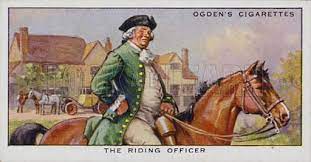

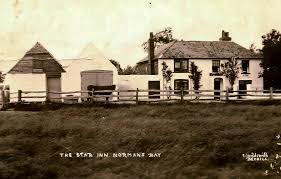
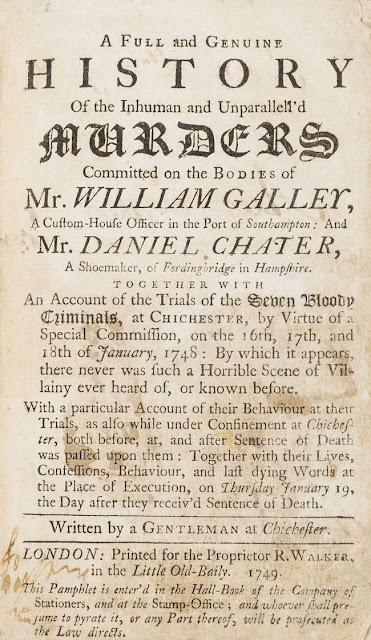




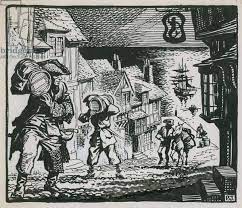
Comments
Post a Comment